SUSAK expo 2006 (April)
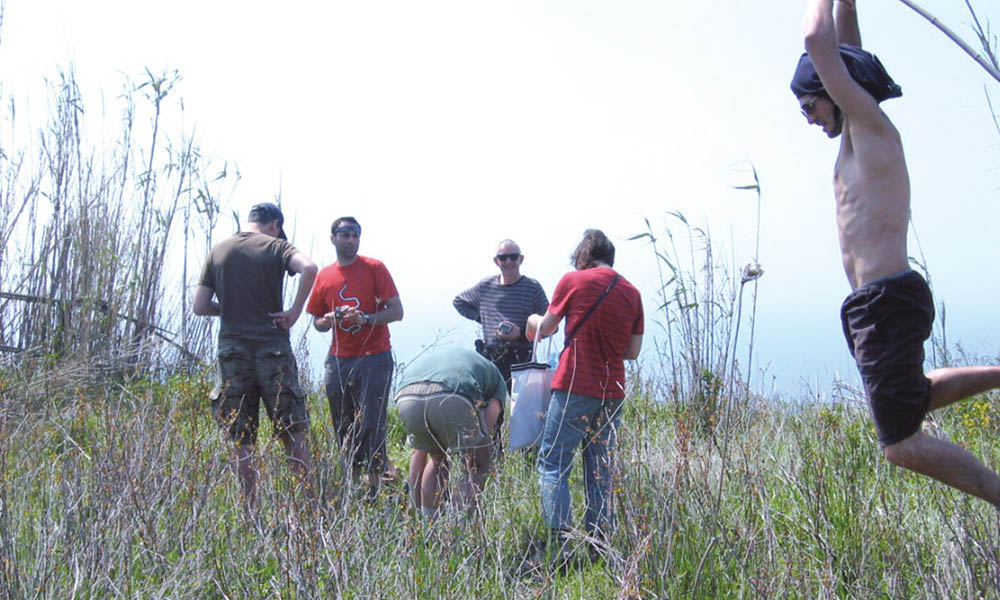
Susak Expo 2006 is not an exhibition. It is, however, a circumstance,
a situation and an event entitled Extended Platforms: no plans, just a time and place. What happens when you put in place a structure that has all the potentiality for art to be made but at the same time has no expectations and leaves all outcomes open?
Susak Conversations, events in and around and between
by Jo Melvin
Susak Expo 2006 begins as an idea to extend platforms by exchanges of contexts and languages through dialogues between people and locations. It’s an idea on the move, an idea in translation. And this text too, translated, will emerge with differences, to become another text. Translation can slip between languages to structure networks of thought. It enables simultaneous experiences to interact. It is vulnerable and open to incompletion as well as failure and misunderstanding. The project may fail or it may succeed, its outcome and even the idea of its completion is uncertain. And because of this openness it is vulnerable, this is its character. One thing about the idea of art is that it isn’t a single idea. And unless it has already entered the culture as history it’s not something already known beforehand. Even its history is not fixed, as we can engage in new dialogues through extended communication interchanges when we encounter the work. This encounter is a metaphorical site as well as a literal one, where there is the possibility for an exchange of feelings across different situations and circumstances. In other words the feelings and experiences of the viewer, the reader, or we could say simply the one who does the encountering, are brought into a relation with the existing historical work that enables a reconfiguring to take place. The work’s lineage is brought into the present now through its participation in a transfer of meaning and context negotiated by individual subjectivities. And in its own way this text submits too similarly through its translation, as an ideological model for Susak Expo.
‘THOUGHTS UNSAID,
THEN FORGOTTEN.’
In 1973 these words were painted on the wall of an exhibition space in Nova Scotia School of Art and design, Halifax, Canada following the instructions sent by the artist Bas Jan Ader1. A bunch of flowers should be placed beside the words. The flowers would not be replaced. They should not be extravagant, but simple common flowers, not roses. Crucially this work was conceived as a time-based event with clearly identifiable stages following precise instructions. The words were to be painted in capitals with light grey/blue paint on a white wall, after a few days the words should be painted over to obliterate their trace and restore the wall to its former colour. The flowers should remain for the duration of the show in the same position, beside the place where the words had been. It lasted a week, the length of his show in the college gallery. It is significant that he referred to the installation of this piece, in other words its enactment, as a performance.
Some thoughts remain unrealised, never spoken or acted upon. Some, like Bas Jan Ader’s, become a monument to an ideal of the unspoken, forgotten and unimportant thought. The inspirational flash for a moment or less may have been marvellous but it failed to yield an active event. A line of thought carries many layers of meaning: if Bas Jan had not sent those instructions we would not have known his unsaid thoughts. The connection between us, and our response to the idea wouldn’t be made. Our unsaid thoughts now have the possibility of sharing a sense of communal understanding.
A conversation in a bar yields an unspeakable word. It is a word to be known but not uttered. To be known for reference is a yardstick of sorts, it helps to indicate how far you can go in your defining, of things and of experience. And what remains indefinable without a boundary to fence it, is this then unsayable? It reminds me of how the poet Coleridge pins down this complex and contradictory feeling as ‘a sight to dream of, not to tell.’ We have words to identify our purposes and we try to say what we mean. Our conversations go around and between two or more people, and with the promise of a closer meaning to close the gap between what we intend and its communication, we keep going. Our intention drives the conversation. We look for understanding in our companion’s gestures, and in their expressions, and we may wonder – do they smile or frown in agreement or disagreement, in confusion or boredom?
We rely on these signs when we are face to face, to see how our discussion is going, and make modifications to how we say what we are saying dependent on these reactions, always holding onto the idea of conversation as an exchange within an arena. The arena is complex because it’s a space defined on one level by the subject, the unspeakable word, and it’s first defining space and on another level the parameters of intention. The arena is not fixed. Although, as with my friend, it may begin in a bar, the conversation is not limited to this particular site. It continues in our thinking and when we repeat it to others. The story moves into different places, into cities and towns and villages and homes. It is told again and again in new locations by different people. Every time the story changes a little, it becomes a different story, someone else’s interests give it new meanings, and although it’s repeated it is never the same, never as it was before.
I’d like to return to the idea of conversation as a site for thought and action. The event of conversation begins with a thought and it can remain an idea or become activated and documented. Documented thought is an event. It becomes enacted through its traces of notation and the event’s actions are recorded through their documentation simultaneously by being witnessed.
I tell this story to illustrate how we may think about art. The word ‘art’ is loaded with conditions of what we expect from it. Historically and culturally the way the story about art is told is different because contexts have different values, but I intend to offer some ways of thinking like tracks or paths that can crisscross one another – but not just one single track, that would be like saying the story always remains the same.
There are questions arising from the stage of translation for this text firstly into Croatian and then Susakian that pragmatically sustain the fluid exchange of the idea’s unfolding story in its repetitions and reconfigurations. Consequently I come back to rework and re-form the negotiated space of the text’s becoming, where my aim is to achieve a transparency in the process of materiality by actualising the event of the encounter. The stage is an important word here in its dual meaning as the stage in the process to mark time, a series of occasions, and the stage as the platform for the event’s location where there follows a kind of performance through the acting out of ideas and situations. This stage is the Susak Club. The players are Daniel, Katarina, Lada, Alenka, Boris, Totka and various others. I remain absent as a player in this context to become an interlocutor of its performance and to witness the textural re-enactment through the exploring questions of meaning and the transference of meaning’s context into a new time/space situation, the club.
Firstly I want to state that all writing is a conversation even if it remains hidden, because it becomes located in a situation. The situation here is not hidden, it is this text, and this text’s intention as well as its function is to locate the dialogues in and around Susak Expo, as well as the idea of Susak Expo. It is also a conversation that in its repetition in the act of translation yields an unspeakable word, a word that identifies more feelings, complexities, as lines of enquiry in thinking than can be uttered singularly. In Susakian there is no one word for art. The idea of what art is then needs to be performed, to be acted out through approximations of sense and meaning. Actions and extemporisations are thrown into a melting pot of social situations, in consequence leading to different projects, their outcomes and relativities through an idea of what the poet, the maker, the thinker do to reconfigure what we think we know – and this form of knowing, as an open-ended process, is determined here by a set of relational substitutions in circumstance and experience.
The absence in Susakian of this word “art” is a gift. It creates a specific gap made by the lack of one word’s containment for an impossible precision. Improvisation takes over in the event of this dialogue and the conversation driven still by its intention can through its players perform a series of acts to create the word’s sense specificity. This is neither an easy task nor glib one and it allows for a relational exchange of experience through the conversation, the story’s re-telling. In this process it becomes transformed. Ideas do not exist in a vacuum and the possibility here of art is that it enables a cultural exchange of meaning and through the value of interpersonal exchange it celebrates the value of subjective experience. I use the word “gift” to emphasise the nature of art’s promise, free to offer a shift in the extension of feeling by a different designation of feelings independent and separate from the notion of market value.
Finding a suitable phenomenal form for an idea is often fraught with difficulties; the thought in second thoughts may be ‘unsaid’ and then, to cite Bas Jan Ader’s subtle paradox, ‘forgotten’. There is no simpler or more gentle way of marking an event than with a bunch of flowers. We give flowers on many occasions, as celebrations in commemoration or commiseration. The flowers in his piece were left after the words disappeared. They withered but marked the place.
Conversations around and between textual exactitude don’t remain fixed as concrete entities, they become performed and enacted to locate meanings through events as synonyms in action. Ideas don’t survive in a vacuum and intellectual enquiry thrives on its exchanges and transformations. What we mean by intention is important because an intent is a gift of sorts, it offers something distinctly identifiable as one’s own yet is not idiosyncratic; it’s an intent to locate feelings and thoughts for others to engage with and then, the door is open. Exchange is a nexus of interstices where thresholds of difference in the house of languages, where every window on a word, every doorway to meaning is a different sedimentation of perceived experience.
From the ancient story of the tower of Babel we have the ideal of a transparency in meaning’s flux of contexts. Its repetition in our conversations brings together different horizons of experienced moments. The desire for communication transparency is one ideal and its intentionality motivates our perpetual improvisations in communication.
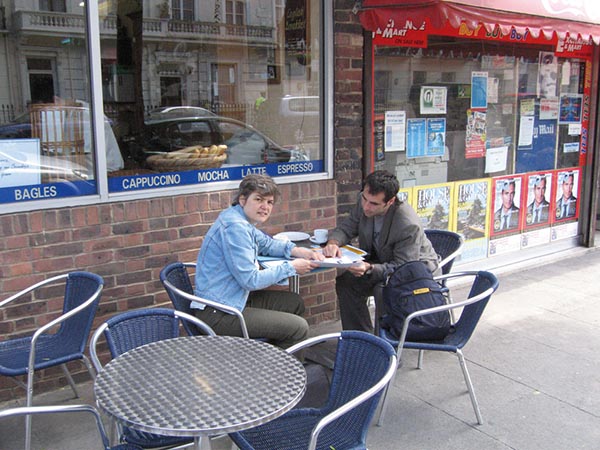
—————————————————————-
checking out the island
Some of the partecipants went to Susak for a week to get a feel for the island.
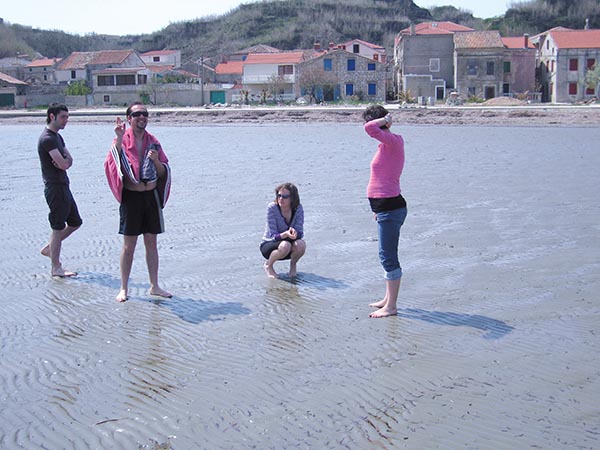
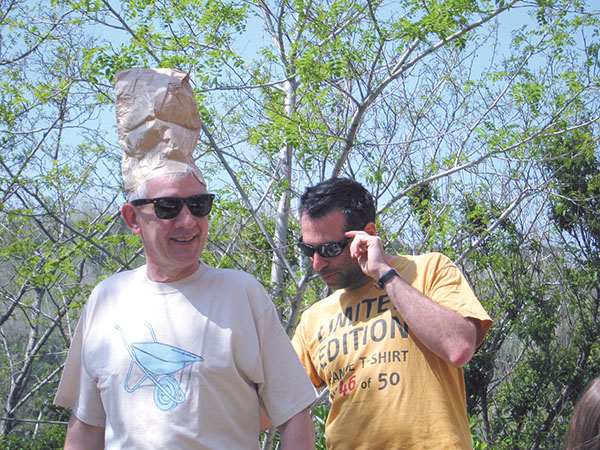
—————————————————————-
expedition to the secret garden
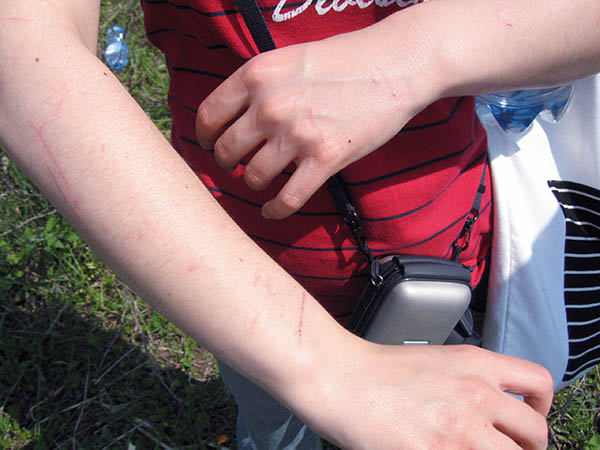

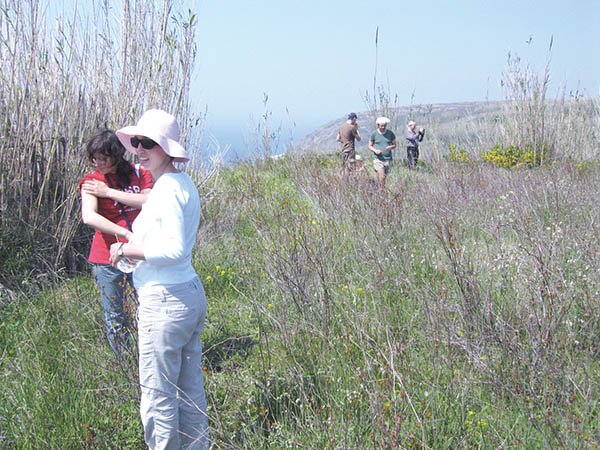
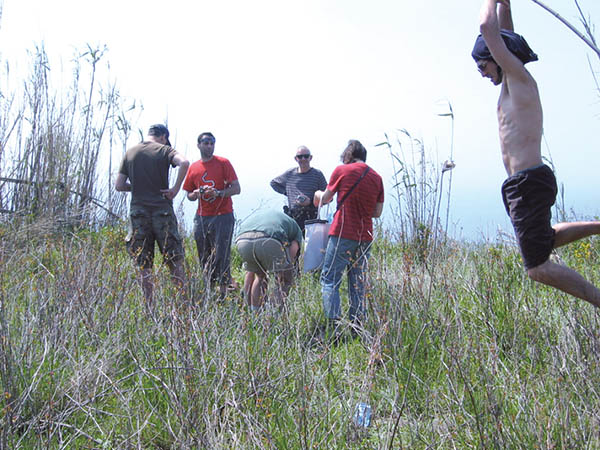
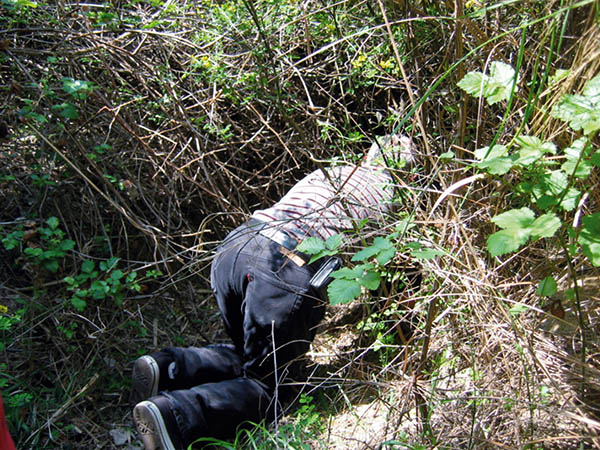
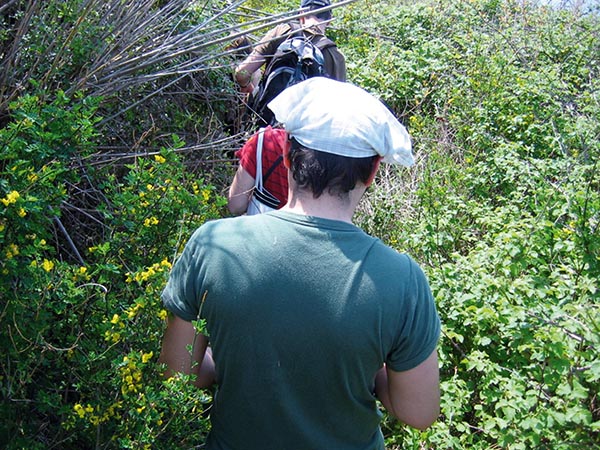
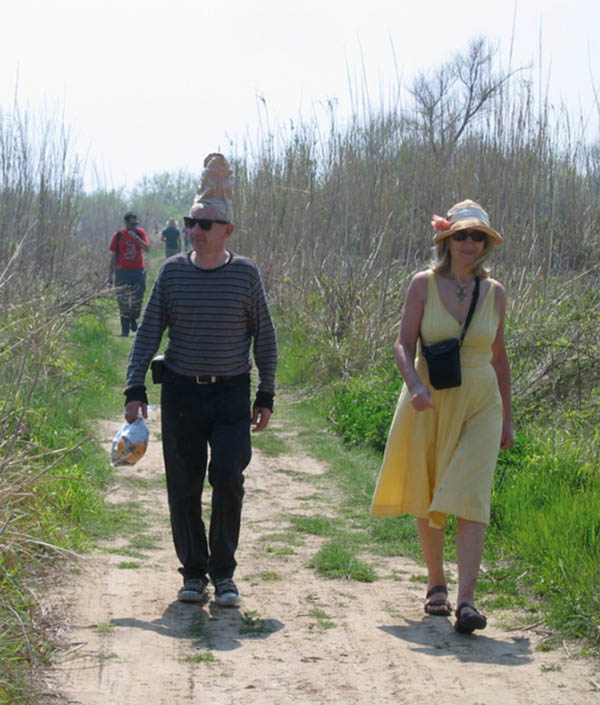
—————————————————————-
Frieze
anniversary issue n.100 [June – July – August 2006]
—————————————————————-
Deškuorš Susački,
Če je našilo ovde, vani i nasred
Jo Melvin’s essay was translated by Totka Picinic, with the help of Lada Sega, Daniel Devlin and the Kapitan at the Susak Klub.

Deškuorš Susački,
Če je našilo ovde, vani i nasred
by Jo Melvin
translated by Totka Picinic
Susak Expo 2006, počel ćinit jideju kruoz deškuorš z judima i somim mjestom da razdili od nas i stvore starinu zajik i veze. Tuo je jideja za jerase i jideja po našu. Po našu je sve koj novo kako bi se stvorile naše misli, kako i ovuof taštamenat i ovuof projekt, tako se more sve ovo razumit i nerazumit, ol uspit ol neuspit. Pak je najglavnije da ova stvor z jideju ni jedina njihova jideja, nego uvik kako se more širit kroz novi deškuorš.
„Misli kje se ne su ćakulale,
Posle su se zobile“
Ove besede su bile letratone na zidu na jednoj galeriji, uputil jih je jedan umjetnik Bas Jan Ader, kako bi klol garoufuoli pored ovih besedi. Rekal je da ovi garoufuoli ne smu bit sila rakamani, da vala su obični, da bi barzo uvenuli pored ovoga taštamjenta. Nike misli ostaju zoblene, a nike misli se nanke ni ne reču. Tako ustane spomen nezoblenih jideji. Kada god nam pride čudna jiskra, ali ju pustimo da nam se ostvari. A kad nam ovuof umjetnik Bas Jan Ader poslol vuov urdin mi nikad ne bi znali negove nediškurene besede. Bilo bi tješko stvorit ovu vezu nad nas i ove jideje.
Jedan deškuors na klubu stvoril je besedu ko se nikad nebi čakulala. Poznivat deštini pomore nam pokozat koliko lorgo moremo prit kozat svoje stvore i starinu. A kad čekot ne moremo ol nijećemo odredit tuo nam ne ustane na besedi. Ovo me poteže namisli na onoga ki je pisol pjesme, Koleri|a koj je to zapisol koj viziju ku sanamo al ju ne govorimo. Mi jimamo naše besede kje odredimo i kje govorimo ono će oćemo. Mi tjendimo i deškurimo. Jišćemo da nas se kapi zonimi zo kimi čakulamo, mi pratimo kako se čudu, kako se grunde po naj zoda se pokupimo.
Latimo se na te besede da vidimo kako naš deškuorš i po potribi kanbijiva našu jideju. Arene se ne kanbijiva. Deškuorš more počat na klubu va kegot uštariji, al se istešo širi po drugim mjestu s drugim judima. Svaki deškuorš se malo kanbijiva pa se počne čakulat čegot novo. Kigot otvori novu jideju i ako se čakulo svejeno, nikad nesu besede svejene.
Tornajmo se na jideju deškuorša od mjesta i misal za kogot delo, kad duro deškuorš uvik nam ostane misal da tako ostane jideja i da ju se zapiše.
Ovuof taštamenat je više klajen i razmišlen na umjetnički način. Ono će mislimo nuditi su niki novi puti, misli ki se uvik moru skuntrovat s drugim judima.
Đo Melvin, Pomajić 2006

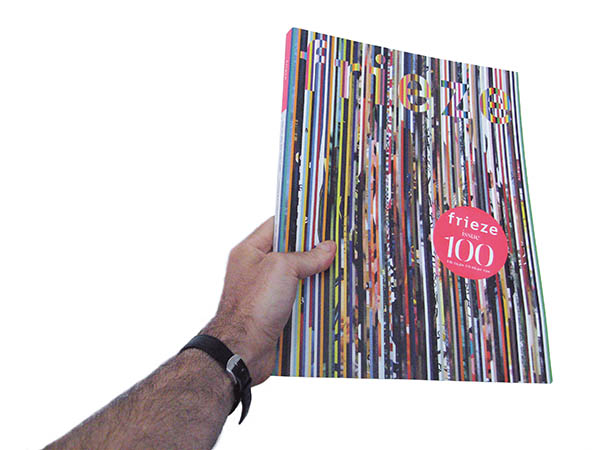
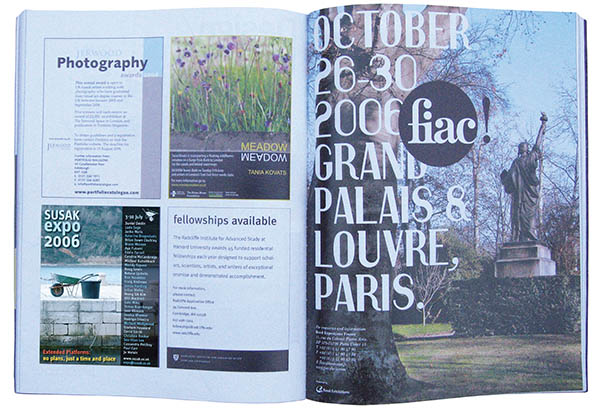
Leave Comment :